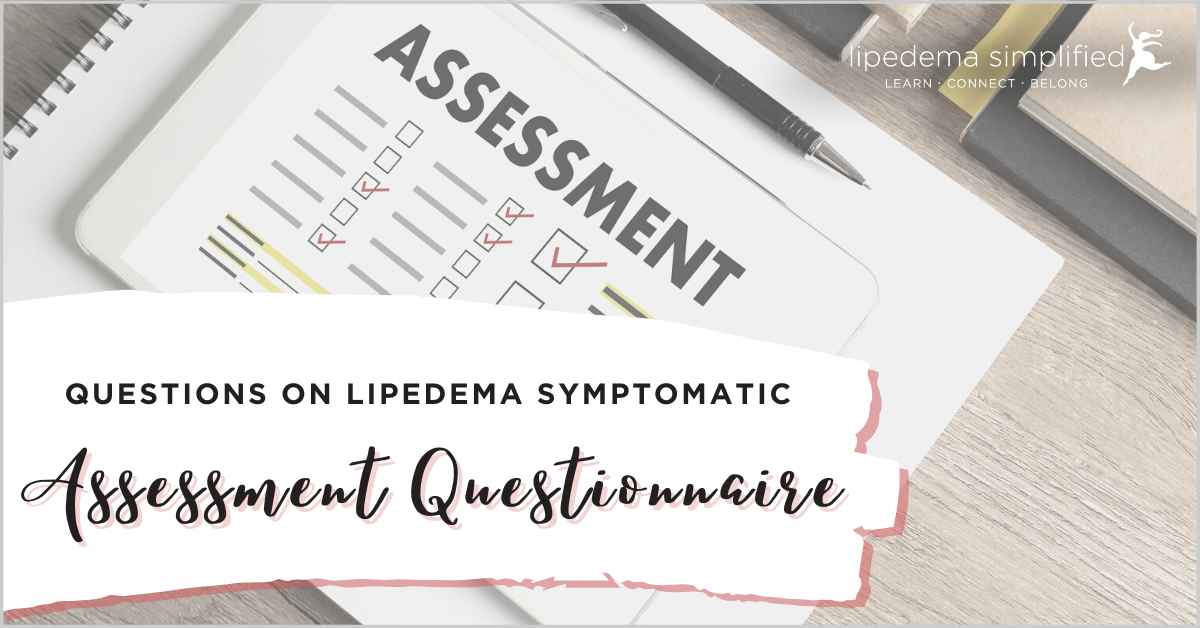
Decoding Lipedema:
A Closer Look at Symptom Assessment and Treatment Efficacy
Hi Everbody! It’s Leslyn Keith, with another deep dive into the fascinating world of lipedema research. As the Director of Research and President of the Board for the Lipedema Project, I’m here to shed light on the pivotal advancements in understanding and treating lipedema.
Tracing the Assessment’s Origins: The German Study
Our journey begins with an interesting paper from Germany, published in 2010 in the Journal of the German Society of Dermatology. Titled “Liposuction is an effective treatment for lipedema – results of a study with 25 patients,” this study not only opened new doors in treatment but also introduced a crucial self-assessment tool for lipedema symptoms.
The German team’s objective was clear: develop a method to objectively quantify the severity of lipedema symptoms both before and after liposuction surgery. This led to the creation of a succinct, yet comprehensive, 15-question survey. Designed to be user-friendly, it takes less than 5 minutes to complete, with each question rated on a scale of 1 to 10.
The 15-Question Lipedema Assessment
Now available in English, this questionnaire serves as a vital tool for individuals and clinicians alike. Let’s take a look at the exact questions:
- Are the affected areas painful?
- Are the affected areas sensitive to touch or pressure?
- Do you bruise easily?
- Do you feel tension in your legs?
- Do you feel excessive warmth in the legs?
- Do your legs feel cold?
- Do you have muscle cramps?
- Do your legs feel heavy?
- Do your legs feel tired?
- Do you sometimes have swelling?
- Is there skin involvement?
- Is there itching?
- Do you have difficulty walking?
- How much has the condition affected your quality of life?
- How satisfied are you with the appearance of your legs?
These questions offer a holistic view of the lipedema experience, from physical symptoms to emotional impacts.
Insights from the German Study
The German study’s application of this survey to 25 women undergoing liposuction revealed significant findings. The average symptom score dropped dramatically post-surgery, from 92 to 39, highlighting liposuction’s potential as an effective treatment for lipedema.
Connecting the Dots: From Germany to Brazil
This brings us to the Brazilian adaptation of the questionnaire, where clinicians sought to make this tool accessible and culturally relevant for their patients. After a detailed translation process, the Brazilian team not only successfully adapted the questionnaire but also provided additional insights. They found a mild correlation between leg size and symptom severity and observed that older women reported less severe symptoms. See their interesting process in this paper published in 2020: Translation, cultural adaptation, and validation of a lipedema symptoms questionnaire by Amato et al.
A Tool for Global Understanding
The journey of this questionnaire, from Germany to Brazil, and its adaptation across cultures, exemplifies the collaborative spirit in lipedema research. It’s more than just a questionnaire; it’s a bridge connecting patients and clinicians worldwide in understanding and managing lipedema.
Wrapping Up
As we continue to explore and understand lipedema, tools like this questionnaire are invaluable. They offer a structured way to capture the complexities of lipedema symptoms and monitor treatment outcomes.
Lipedema Management Tips:
- Use Assessment Tools: Regularly utilize questionnaires to monitor your symptoms.
- Consider Treatment Options: Discuss potential treatments like Complete Decongestive Therapy and liposuction with your healthcare provider.
- Stay Informed: Keep up-to-date with the latest research and findings.
- Share Your Experience: Your journey can help others in the Lipedema community.
Thank you for joining me on this enlightening journey through lipedema research. Stay tuned for more updates!
Don’t forget to subscribe to our daily Flash Briefings for more tips, tools, and research on managing lipedema. You can find us on Apple, Spotify, Amazon Alexa, or at lipedema-simplified.org/flash.
